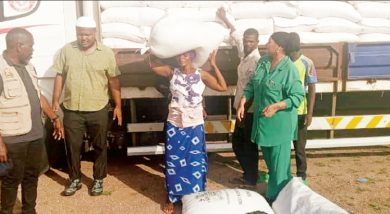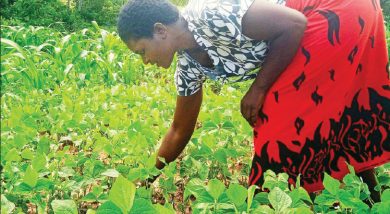Who missed the figure?
Conflicting figures from President Peter Mutharika and Minister of Agriculture, Irrigation and Water Development George Chaponda on the number of food insecure families are confusing and may affect humanitarian response planning, a commentator has said.
Civil Society Agriculture Network (CisaNet) national coordinator Tamani Nkhono-Mvula has since advised government to be consistent and quickly come out clearly on the same.

He was responding to a question The Nation put to him yesterday regarding conflicting figures on the number of people feared to go hungry which the President put at three million in his State of the Nation Address (Sona) delivered in Parliament on Friday.
However, a few days later, Chaponda, delivering a ministerial statement on the food situation in the country in the same Parliament on Tuesday, said the population of people with no food between April 2016 and March 2017 would be 8.4 million.
Surprisingly, when the President last month made a declaration of a State of National Disaster caused by prolonged dry spells during the 2015/2016 season, he was non-committal on specific figures of those expected to be food insecure.
Chaponda told Parliament a rapid assessment his ministry in collaboration with the United Nations (UN) agency, Food and Agriculture Organisation (FAO) conducted to determine the impact of the El Nino phenomena on crop production was the basis of his 8.4 million figure.
The gap in these figures, observed Nkhono-Mvula, was just too much and frightening.
He said: “I understand the President said ‘over three million’ which represent 20 percent of the population. However, if you look at the 8.4 million figure—which represents half the population—it becomes frightening. Perhaps if he [the President] said over six million people.”
Nkhono-Mvula said this could affect planning not only among the people, but also different actors involved in humanitarian response.
“Government should quickly come out clear. If they are not ready, they should, at least, speak with a common voice. What we are getting is confusion,” he said.
Chaponda could not immediately clarify the disparities yesterday as he kept saying he was in a meeting even after The Nation had sent him the questions through short messaging service (SMS). Before going to press, we called again but his spokesperson said he was still in a meeting.
In 2015/16 growing season, has been badly affected by adverse weather conditions caused by the El Nino phenomenon. This has negatively affected crop production including maize the staple food.
The second round Agricultural Production Estimates Survey which the Ministry of Agriculture, Irrigation and Water Development undertook between mid-February and March this year, estimates maize production for the season at 2, 431 313 metric tons (MT), representing 12.4 percent decline in production as compared to the 2014/2015 final round estimate of 2 776 277MT.
The country’s maize requirement for human consumption, seed, stock feed and industrial use is currently estimated at 3 205 135MT.
This being the case, it is projected that the country will face a maize deficit of about 1 072 461MT—the worst in 10 years.
During the declaration of the disaster, the President underlined that the actual number of food insecure people will be determined by the Malawi Vulnerability Assessment Committee in ‘due course when the annual vulnerability assessment is undertaken’.
However, he added, the Ministry of Agriculture, Irrigation and Water Development has estimated that due to the partial or complete loss of crops through El Nino induced dry spells, the affected population will require about 790 000MT of relief food. n





